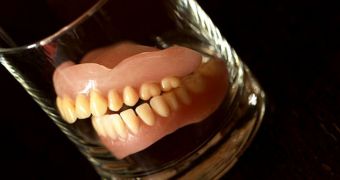A team of researchers claims to have discovered a so-called microbial Pompeii on the teeth of skeletons left behind by people who lived about 1,000 years ago.
In a paper in the journal Nature Genetics, the international team of scientists details the discovery of many opportunistic pathogens in the ancient human oral cavity.
They researchers say that, as shown by their analysis of this microbial Pompeii, folks who developed periodontal disease hundreds of years ago did so because of the same bacteria that affects modern humans.
This is despite changes that have taken place in human diet and dental hygiene over the years, they go on to explain.
What's more, it would appear that the oral microbiome of ancient humans contained the basic genetic information to generate antibiotic resistance long before the first therapeutic antibiotics hit the market in the 1940s.
According to Eurek Alert, the researchers managed to find and analyze this microbial Pompeii with the help of dental calculus, otherwise known as plaque.
Thus, it was this material that encompassed bacteria and food particles found in the oral cavity of ancient humans and preserved them for hundreds of years.
“Dental calculus is a window into the past and may well turn out to be one of the best-preserved records of human-associated microbes,” says study author Christian von Mering.
“We knew that calculus preserved microscopic particles of food and other debris but the level of preservation of biomolecules is remarkable,” adds specialist Matthew Collins.

 14 DAY TRIAL //
14 DAY TRIAL //